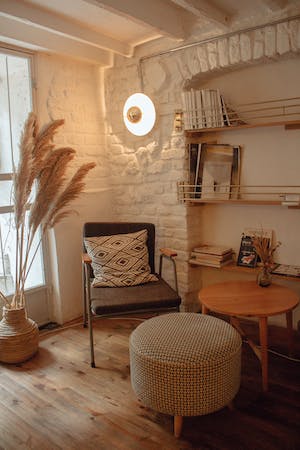What is Interior Design?
by siteadmin

Interior design is the art of creating and planning interior spaces. This includes everything from the design of the room to its color scheme and materials.
Interior design is more than just aesthetics. It involves creating an environment that meets environmental, safety, and accessibility requirements and remains functional and pleasant for the inhabitants. Certified interior designers are required to fulfill a number obligations, including continuing education requirements and obeying all local laws and regulations.
It is both an art and a science to enhance the interior environment.
Interior design is the art of optimizing an interior environment for health, comfort, aesthetic appeal, and efficiency. It involves the planning and coordination of any projects that are done to enhance the interior environment.
Interior designers have a thorough understanding of human behavior and needs, ergonomics, material properties, performance, economics, and composition. They apply these principles to each design project, ensuring that the space is both functional and visually pleasing.
Interior designers work across a variety of environments, including residential, commercial, healthcare, hospitality, universal design exhibition, and spatial branding. All of these sectors demand extensive technical knowledge and specialized skill.
It is the process that involves planning and executing interior design.
A space designed by a professional interior designer should be aesthetically pleasing and functional. An experienced designer optimizes a space to meet the client's needs while maximizing its beauty.
For a project to be successful, it is important that all stakeholders communicate, plan the space, conduct site inspections, do programming research, and develop a concept. Understanding any applicable building code regulations or standards is also crucial.
Interior architects create detailed designs of the spaces that they want to design. These plans not only showcase aesthetic features of their creation, but they can also include structural components like electrical wiring, plumbing lines, heating/air-conditioning systems etc.
Interior design is a skill that involves taking into account a variety of factors, including user behavior, comfort, ergonomics, and the coating specifications for materials and coatings, in order to create functional and aesthetically pleasing spaces.
It is the art and science of combining function with form.
Combining form and function is one of the most difficult challenges that architects and interior designers face. When designing a room, whether it is for commercial or residential purposes, one must take into consideration factors such as space planning and material selection.
Professionals of every kind are increasingly focusing on designing "liveable" spaces that meet the needs and abilities of individuals of any age in a cost effective way. This work can include renovating existing spaces or creating new structures from the ground up.
If you are interested in a career in design, you may want to enroll in a degree program at a college or university that offers the necessary training. You can also opt for graduate or Ph.D. programs to gain valuable information.
It is the art and science of applying aesthetics in everyday life.
The application of aesthetics to everyday life is a new branch of philosophy that explores the ways in which our everyday habits, experiences, and objects can contribute to or become part of aesthetic experiences. As examples, Japanese tea ceremony or hanging laundry can be considered aesthetic experiences.
In the past, aesthetics has been based on three senses: vision, hearing, and touch. Taste and smell are also important in understanding our surroundings.
The modern era has seen a marked decline in the importance of visual and audio stimuli, due to Kant's and Descartes’ philosophical perspectives which associate them with cognitions of external objects. Nietzsche, Hegel and others placed greater emphasis on taste and smell as subjective pleasures that also contribute to the perception of external reality.
https://www.editdesignhouse.com/
Interior design is the art of creating and planning interior spaces. This includes everything from the design of the room to its color scheme and materials. Interior design is more than just aesthetics. It involves creating an environment that meets environmental, safety, and accessibility requirements and remains functional and pleasant for the inhabitants. Certified interior…
Recent Posts
- Carpentry as Art: Exploring the Creative Expression of Carpenters
- Mastering the Craft: The Mastery of Materials and Tools by Carpenters
- Tracing the Craft: The Historical Evolution of Carpentry Techniques by Carpenters
- Elevating Interiors: Enhancing Spaces with Crown Molding
- Mastering Crown Molding: Practical Considerations and Installation Tips
